Zakynthos: A Jewel of the Ionian Sea
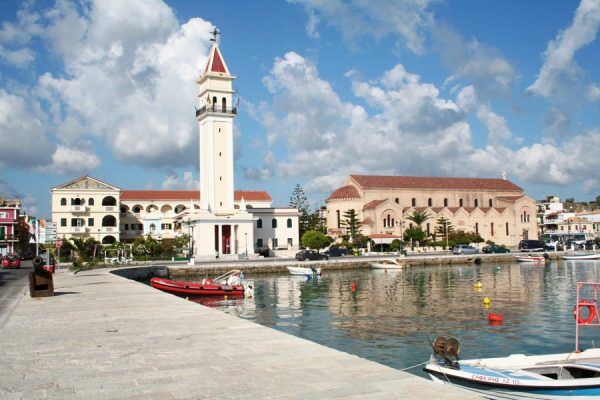
St. Denis, Church, Zakynthos / Zante town, Greece
A Land of Beauty and Myth
Chosen by the gods Artemis and Apollo for their holidays, Zakynthos enchants visitors with its idyllic landscapes, lush greenery, stunning sandy beaches, and crystal-clear waters. The island boasts picturesque coastal caves, breathtaking sunsets, and a temperate climate. Today, you too can savor the delights of Zakynthos—not just for its natural beauty, but also for its vibrant culture, warm hospitality, and the enchanting serenades of its canteens. This holiday will leave a lasting impression, forever scented with jasmine.
History: A Rich Heritage
Zakynthos has a rich past, with traces of human life dating back to the Neolithic era found in Laganas Bay. According to Pliny, the island was inhabited before 3000 B.C. and was known as Hyra. Near the fortress, a marble ensemble of deities such as Apollo, Aphrodite, and Artemis was discovered, now housed in the Tiepolo Museum in Venice, highlighting the ancient residents’ affinity for music and their worship of Artemis.
The island was named after Zakinthos, son of Dardanus, king of Troy. Zakinthos arrived from the Arcadian city of Psophis around 1500 B.C., giving his name to the new city. His descendants established a remarkable civilization, founding colonies such as Zakynthos in Spain and Kydonia in Crete.
During the Mycenaean era, the island was part of the Ithacan kingdom, and Homer referred to it as “huliessa,” meaning lush and fertile. Its strategic location and fertile land played crucial roles in its economic development, leading to the minting of silver coins featuring Apollo’s sacred tripods in the 6th century B.C.
For centuries, Zakynthos enjoyed a democratic life until it was unified with the Athenian League in 455 B.C. After various occupations, including the Spartans and Romans, the island witnessed the rise of Christianity and later fell into the hands of the Venetians in 1485, who brought stability and growth.
Zakynthos thrived during the Venetian occupation, becoming known as the “Florence of the East” due to its cultural richness, which was further enhanced by its musical heritage. The first music school in Greece was founded here in 1815, producing internationally recognized musicians.
After a tumultuous history involving French, Russian, and British occupations, Zakynthos became part of Greece in 1864, embracing its identity while contributing to the broader Greek cultural landscape.
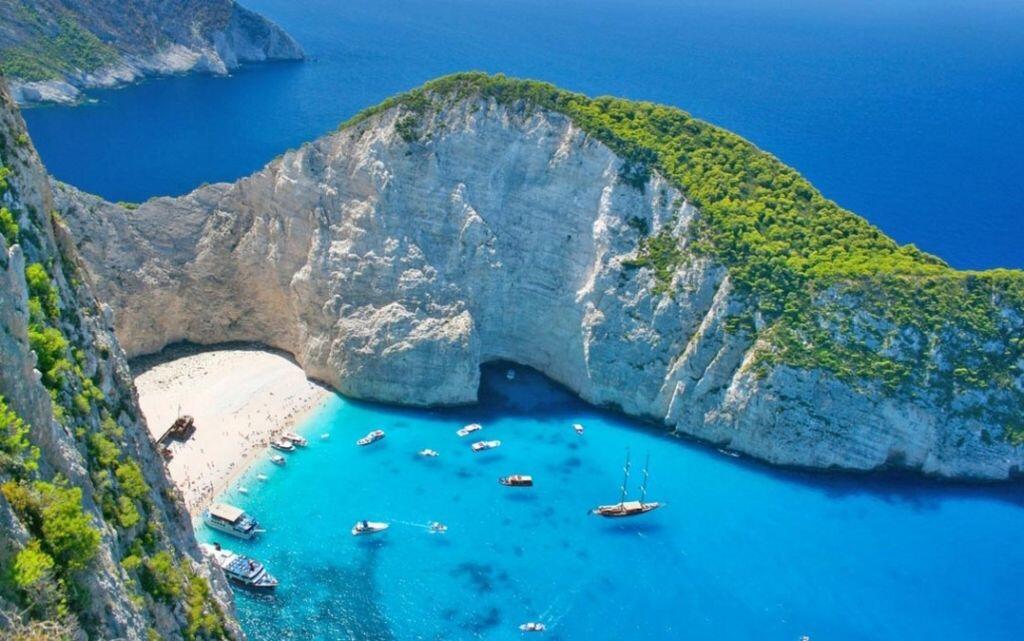 Culture: A Vibrant Artistic Legacy
Culture: A Vibrant Artistic Legacy
Renowned for its music, poetry, and hospitality, Zakynthos has produced notable figures like national poet Dionysios Solomos and writer Hugo Foscolo. The island is characterized by a blend of Venetian influences and Greek traditions, resulting in a unique cultural identity.
Music runs deep in the veins of the Zante people. The Zante serenade tradition, which flourished during Venetian rule, continues to thrive today. The island’s theaters gained prominence in the 15th century, showcasing works like Aeschylus’ “The Persians.”
Today, Zakynthos remains a significant cultural hub, hosting numerous concerts and events annually. Its residents are known for their warm, lively demeanor and a deep appreciation for the arts.
The Natural Beauty of Zakynthos
Geographically, Zakynthos is the southernmost and the third-largest island of the Ionian archipelago, located just south of Kefalonia and west of the Peloponnese. Its varied landscapes feature lush mountains, fertile valleys, and picturesque beaches, alongside dramatic cliffs and sea caves like the famous Blue Cave.
The island’s mild Mediterranean climate contributes to its rich flora, earning it epithets such as “huliessa” and “Flor di Levante” (Flower of the East). Zakynthos is also known for its agricultural bounty, particularly olives, citrus fruits, and raisins, which produce exquisite local wines.
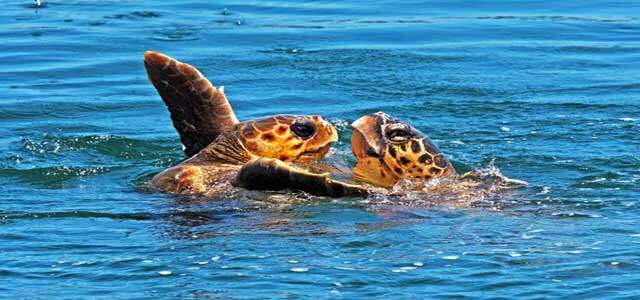 Environmental Stewardship
Environmental Stewardship
The people of Zakynthos take pride in preserving their natural heritage, protecting rare marine species like the Caretta caretta turtle, which nests on its southern shores. The establishment of the National Marine Park in Laganas Bay underscores their commitment to conservation, harmonizing modern development with environmental sensitivity.
Strofades Islands
Nestled deep in the waters of the Ionian Sea, the Strofades Islands rise 45 kilometers southwest of Zakynthos and 78 kilometers west of Cape Katakolo in the Peloponnese. Known in ancient times as the “Floating Islands,” they indeed appear to drift on the surface of the sea. The larger island is called Stamfani, while the smaller one is known as Arpyia, and the two are connected by a rocky isthmus.
On Stamfani, you’ll find a lighthouse and the Monastery of the Transfiguration or the Panagia Pantohara, founded in 1241 during the Byzantine Empire. This monastery was once home to Saint Dionysios, the patron saint of Zakynthos. The imposing structure resembles a medieval fortress, with walls towering over 25 meters, clearly built for protection against pirate raids.
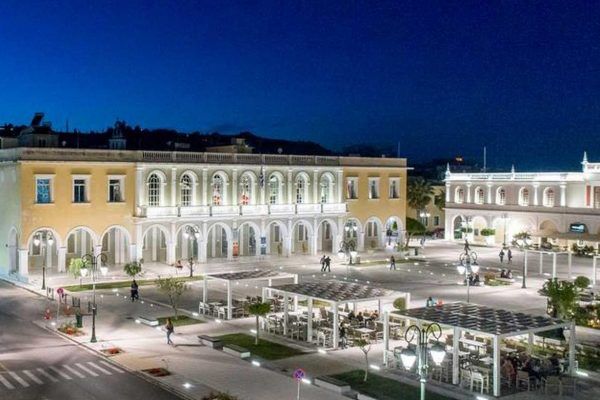
Museum, Solomos square, Zakynthos, Greece
Museums of Zakynthos
Byzantine Museum of Zakynthos
Located in Solomos Square, this museum offers a rich collection of portable icons, showcasing the evolution of ecclesiastical painting from Byzantine times to the 19th century. With around a thousand icons representing post-Byzantine, Ionian, and Zakynthian art, it features works by notable artists such as Damaskinos, Tsane, Kallergis, Doxaras, Koutouzis, and Tsonis. While older exhibits reflect traditional Byzantine art, works by Panagiotis Doxaras (1622-1700), trained in Venice, are naturalistic and belong to the Ionian School.
Solomos Museum
Situated in Saint Mark’s Square, this museum houses the impressive tombs of the poet Dionysios Solomos (1798-1857) and another prominent Zakynthian poet, Andreas Kalvos (1792-1869). At the entrance lies a piece of oak from the tree where Solomos was inspired to write the “Hymn to Freedom,” which later became the national anthem of Greece.
Milaneio Nautical Museum
Located in Tsilivi (5 kilometers from the city), this museum uniquely showcases the maritime history of Greece. It features a gallery with a distinguished collection detailing 4,000 years of naval history, including artifacts from famous ships, photographs, uniforms, and historical memorabilia.
Helmi Natural History Museum
Situated in Agia Marina, this museum boasts over 500 samples from the natural world, including birds, fish, shells from seven seas, and extinct plants and animals, alongside rocks and minerals.
Ecclesiastical Museum
Housed in the new wing of the Strofades and Saint Dionysios Monastery, inaugurated on November 12, 2000, this museum showcases Christian art, particularly items from the Strofades Monastery. Its collection includes treasures, relics, manuscripts, liturgical vessels, and icons, all reflecting the spiritual heritage of the monastery and highlighting the artistic synergy between Byzantine and Western traditions.
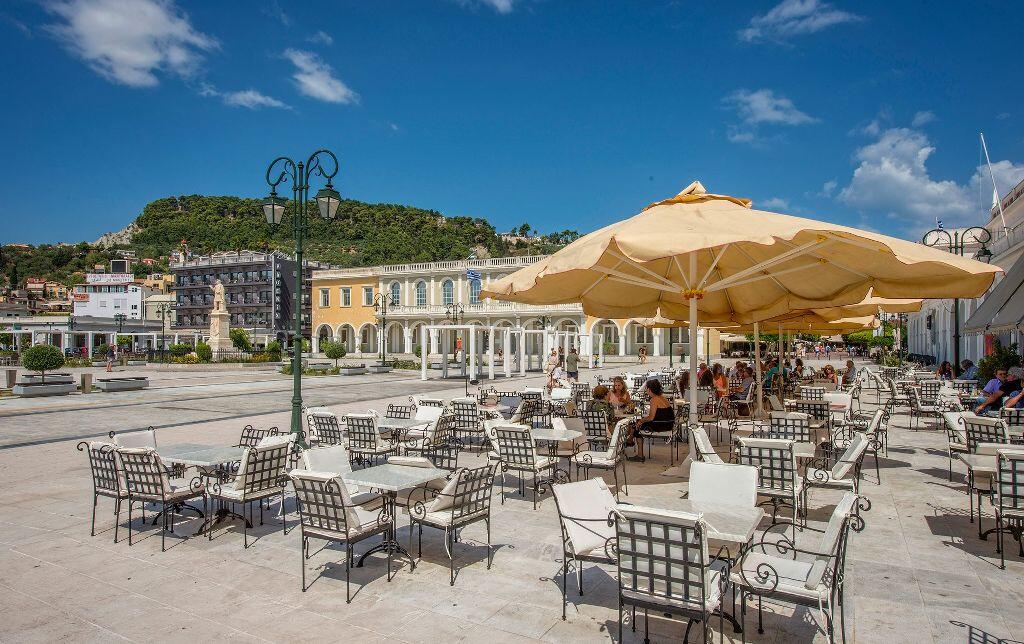
Monuments
The monuments of Zakynthos stand as witnesses to the island’s history and culture. Notable landmarks include the statue of Solomos in his namesake square, the statue of Glory, embodying the spirit of the national poet, and tributes to the national poet of Italy, Foscolo, alongside columns commemorating the history of the Filiki Eteria and the works of Kalvos.
Churches
Zakynthos is home to several remarkable old churches that were preserved and restored after the earthquakes of 1953. The Church of Saint Dionysios, the island’s patron saint, located in the city center, is particularly significant, housing his relics and a beautiful Ecclesiastical Museum. Other noteworthy churches include Saint Nicholas of Kiliomenos, the Monastery of Panagia Spiliotissa in Orthoniae, and the Monasteries of Yperagathos and Saint George of Kremna.
Mediterranean Flavors
What makes Ionian cuisine distinct from other Greek culinary traditions? It is influenced by local customs, historical circumstances, economic conditions, and available ingredients. Primarily, Ionian cuisine is Mediterranean, characterized by the use of high-quality olive oil, which balances the acidity of tomatoes and lemons, complemented by aromatic herbs rather than spicy seasonings.
Zakynthos is rich in olive trees, producing some of the finest oil in Greece. The island’s recipes, which have remained largely unchanged over time, tend to be hearty and garlicky. A signature dish is “Sartsa,” a slow-cooked beef or veal dish with tomato, garlic, feta cheese, and a hint of oregano. Another local favorite is “Skordostoubi,” made with eggplants and generous amounts of garlic.
Notable local products include spicy feta cheese, preserved in clay jars filled with olive oil, and the local myzithra cheese, which is either salted or unsalted and enjoyed with sugar or honey. The island is also renowned for its homemade bread and traditional sweets like “mandolato,” believed to be its birthplace, made from egg whites, roasted almonds, and honey or sugar, and “pasteli,” an ancient treat made from sesame, honey, and almonds.